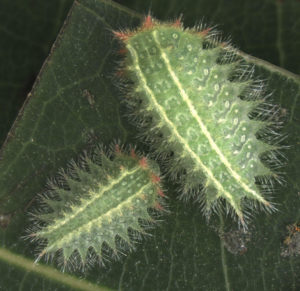Tuesday December 12th
MCZ 101, 26 Oxford Street, Harvard University
07:30 PM
Things that go thump in the night:
Vibrational communication in the
New Zealand giant weta
Daniel R. Howard and Carrie L. Hall
University of New Hampshire

Dr. Daniel R. Howard and Dr. Carrie L. Hall, of the University of New Hampshire, present a talk on communication and vibrational signaling in the New Zealand giant weta, which ranks among the most massive insects in the world.
Communication via substrate-borne vibration is common in many insect groups, with vibration often serving as a secondary or tertiary channel of a multimodal signal. The New Zealand giant weta (Orthoptera: Anostostomatidae: Deinacrida) are a group of eleven rare insect species belonging to an endemic genus whose communication systems remains poorly understood. Our field observations of intraspecific interactions in one species, D. rugosa, provided us with preliminary evidence that individuals of this lowland species produce some form of substrate-borne vibrational signal in unknown contexts.
Here we present specific findings from behavioral trials with D. rugosa that identified: 1) the acoustic structure of vibrational signals, 2) the biomechanics of signal production, and 3) the primary social context in which vibrational signals are produced, and allowed us to infer the function of vibrational signaling in the species. We then compare these findings with subsequent research on the alpine-dwelling D. connectens and the arboreal D. mahoenui. 
Implications related to potential noise effects of substrate-borne vibration on threatened and endangered insects are discussed in the context of both these charismatic insects, along with more familiar groups found closer to home.
The talk is free and open to the public. The meeting is readily accessible via public transportation. Parking is available in the Oxford Street Garage with advance arrangement, as described here, or (usually but not always) at spaces on nearby streets. Everyone is also welcome to join us for dinner before the talk (beginning at 5:45 PM) at the Cambridge Common, 1667 Mass Ave., Cambridge.
CEC meetings are held the second Tuesday of the month from October through May. The evening schedule typically includes an informal dinner (5:45 to 7:15 PM) followed by our formal meeting (7:30 – 9:00 PM). The latter begins with club business and is followed by a 50 minute entomology related presentation. Membership is open to amateur and professional entomologists.



